It’s the dream, isn’t it? To open a nursery, one that just happens to have a rather lovely wall around it and some gracefully ageing apple trees. Perhaps you might even indulge in your other love and serve some very good English wine for customers to sup between viewing your beautiful border and buying a fine selection of plants.
Jill Rallings, co-owner of Mynd Hardy Plants, certainly had a dream when she upped sticks from London, leaving her job in education to move to Shropshire. The dream just didn’t yet have a nursery in it – that is until she and her husband Richard had an idea. Originally a soil specialist and environmental adviser, Richard is also trained in garden design and had started a vineyard in Morville that was rapidly expanding. Its success meant that the couple needed to find outlets for the award-winning wine. “We thought the combination of wine and plants would be perfect, so we contacted Mynd Hardy Plants, but the owner was looking to sell up.” Rather than try to sell him some wine, the couple decided to buy the nursery. This was in March 2014 and they haven’t looked back since.
The nursery is located within the Victorian walled garden of Delbury Hall, leased from the owner Patrick Wrigley. With his support but an otherwise free rein to develop the site, Richard and Jill decided on a slow, sympathetic restoration to marry the historic walled garden – built in 1850 and home to apple trees, thought to be ‘Golden Noble’ and around 150 years old – with a modern nursery.
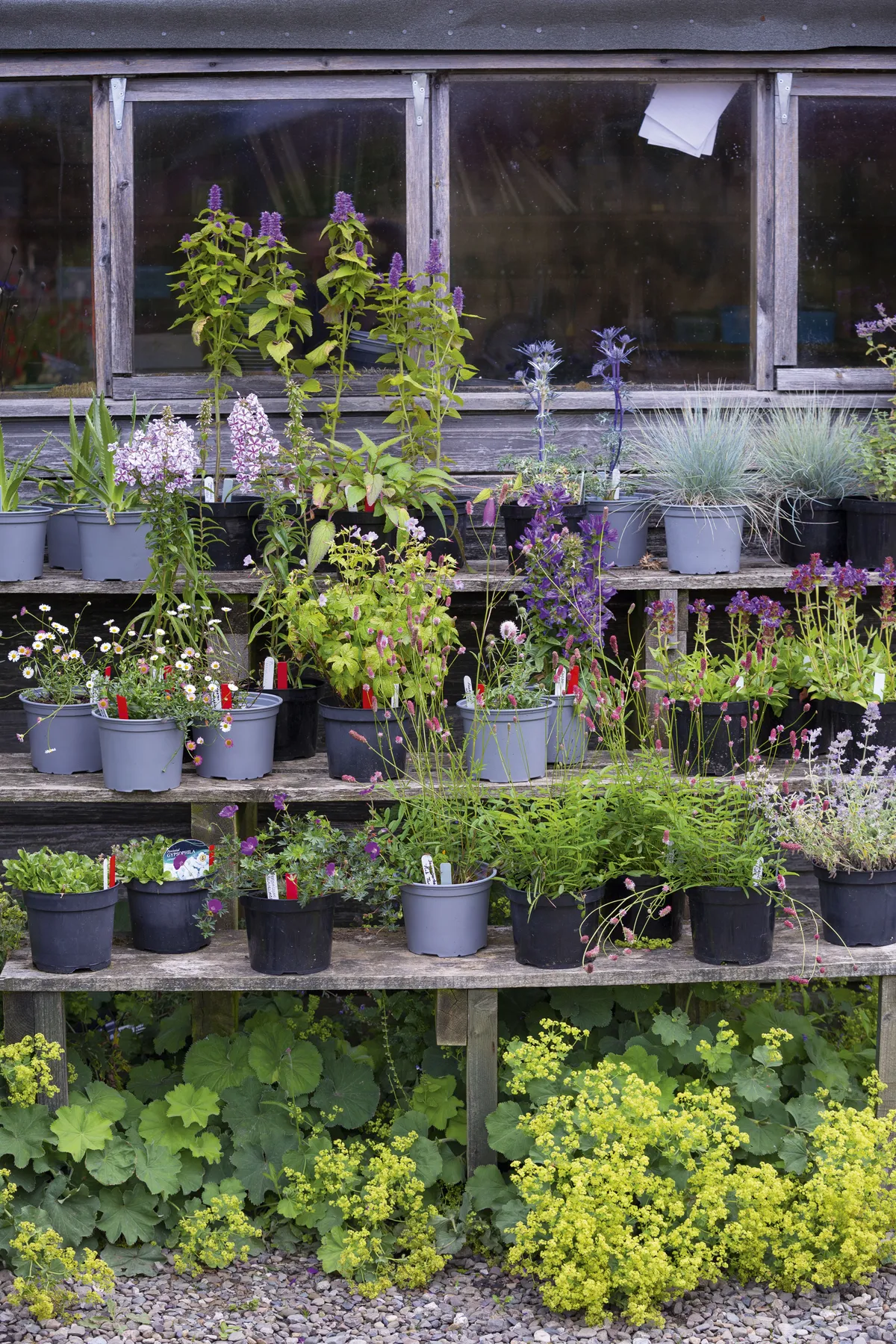
For the previous seven years, the nursery had specialised in daylilies and Jill and Richard wanted to continue with these. But the couple also wanted to add the plants that they love and champion, including around 100 named penstemons, as well as a good range of asters, geums, geraniums and other garden stalwarts.
“We’ve chosen plants that are versatile, have a long flowering season, and a good range across the colour palette,” says Richard. Unsurprisingly, these are all plants that work well in a walled garden, complementing the rich-terracotta colour of the brick walls. By displaying the plants here, visitors get to see examples of planting combinations and this gives context: “You can see what this little plant in a pot is going to become, how large it will grow eventually, which is important for the customer,” says Richard. The range is not just about flowers; there is an emphasis on foliage and texture too as in the lime-green foliage of Tanacetum vulgare ‘Golden Fleece’ and the huge, scalloped leaves of poppy Macleaya microcarpa ‘Kelway’s Coral Plume’.
“The walled garden is as important to us as the plant sales and we’ve gained so much from being part of the Walled Kitchen Garden Network [a group dedicated to the restoration and renovation of historic walled gardens],” says Jill.
The couple is mindful that the restoration work involves a juxtaposition between creating a display garden and keeping the nostalgia of the place. “It would have looked very different in its heyday as a working walled garden,” says Richard,“but we’ve tried to retain the formal structure within a more naturalistic and informal planting scheme.” They achieve this with the likes of Bidens aurea ‘Hannay’s Lemon Drop’ and grasses such as Stipa tenuissima and Calamagrostis x acutiflora ‘Karl Foerster’. There’s a strong emphasis on plants that will bring in pollinators, such as Teucrium fruticans and Salvia x jamensis ‘Maraschino’. The latter is not necessarily fully hardy past -10°C, but Richard and Jill have a policy to grow their plants hard. “We remove the polytunnel doors in winter; it can even get down to -20°C degree here.
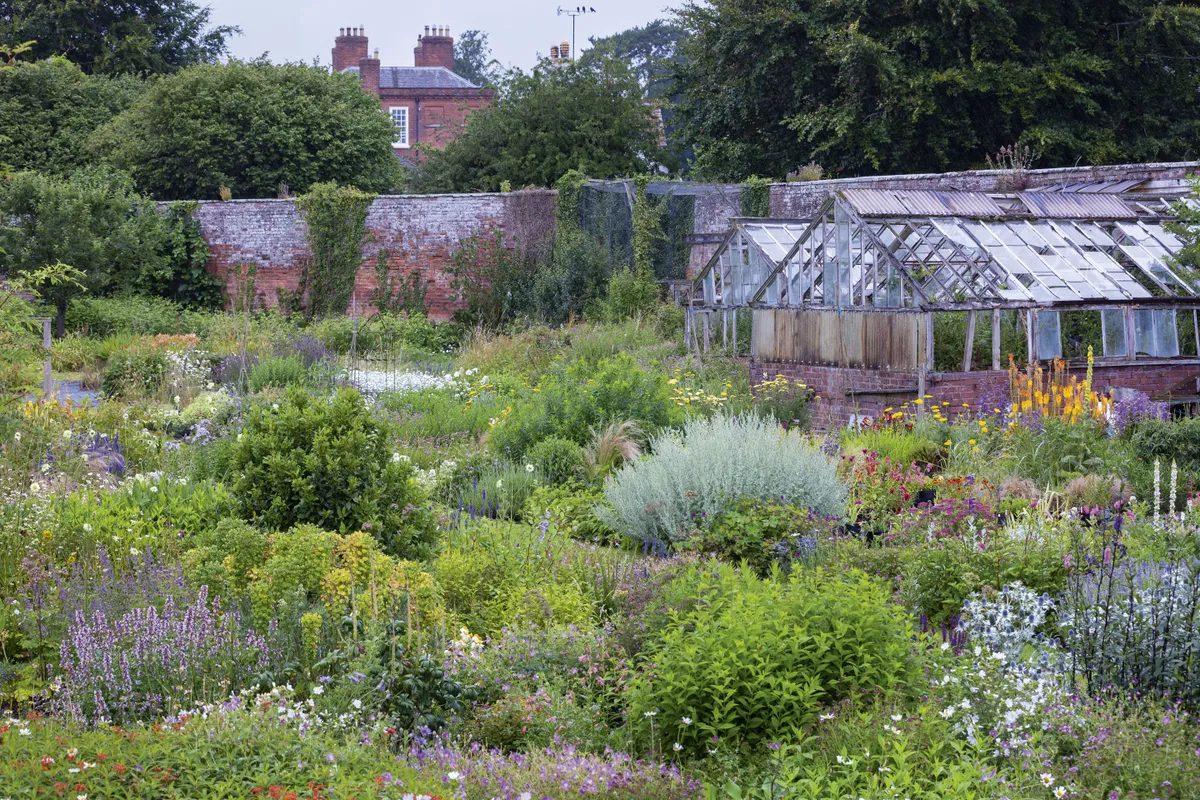
We sit at the lowest point in the estate and it’s a bit of frost pocket,” says Richard. But that’s good for customers because, as the display garden attests, these plants are tough.
For a nursery to be successful it must be business-orientated, but Jill and Richard are equally determined to have fun. “We might stop and have a cup of tea and a chat with a customer.
It’s such a pleasure to be your own boss,” says Jill. “We have the freedom to make decisions about what we do and how we do it.” This includes opening on summer evenings with wine and music, getting involved in charity days for the National Garden Scheme and Shropshire Historic Churches Trust, and inviting garden clubs to talks and tours of the garden. In the winter, when the nursery and gardens close,“it’s just us. This is our time to work on the garden as we please,” says Jill.
“Perhaps because we’ve come from other careers, we’ve got so immersed in this life,” she adds. “We meet such lovely people, and learn so much from them, and that’s a joy.” It is the dream to get to garden this way and it’s one that Richard and Jill don’t take for granted. Perhaps that’s why Mynd Hardy Plants truly is that secret walled garden, complete with a slice of happiness inside.
USEFUL INFORMATION
Address Mynd Hardy Plants, The Walled Garden, Delbury Hall Estate, Mill Lane, Diddlebury, Shropshire SY7 9DH. Tel 01584 841222. Web myndhardyplants.co.uk
16 key plants from Mynd Hardy Plants
Verbascum chaixii ‘Album’
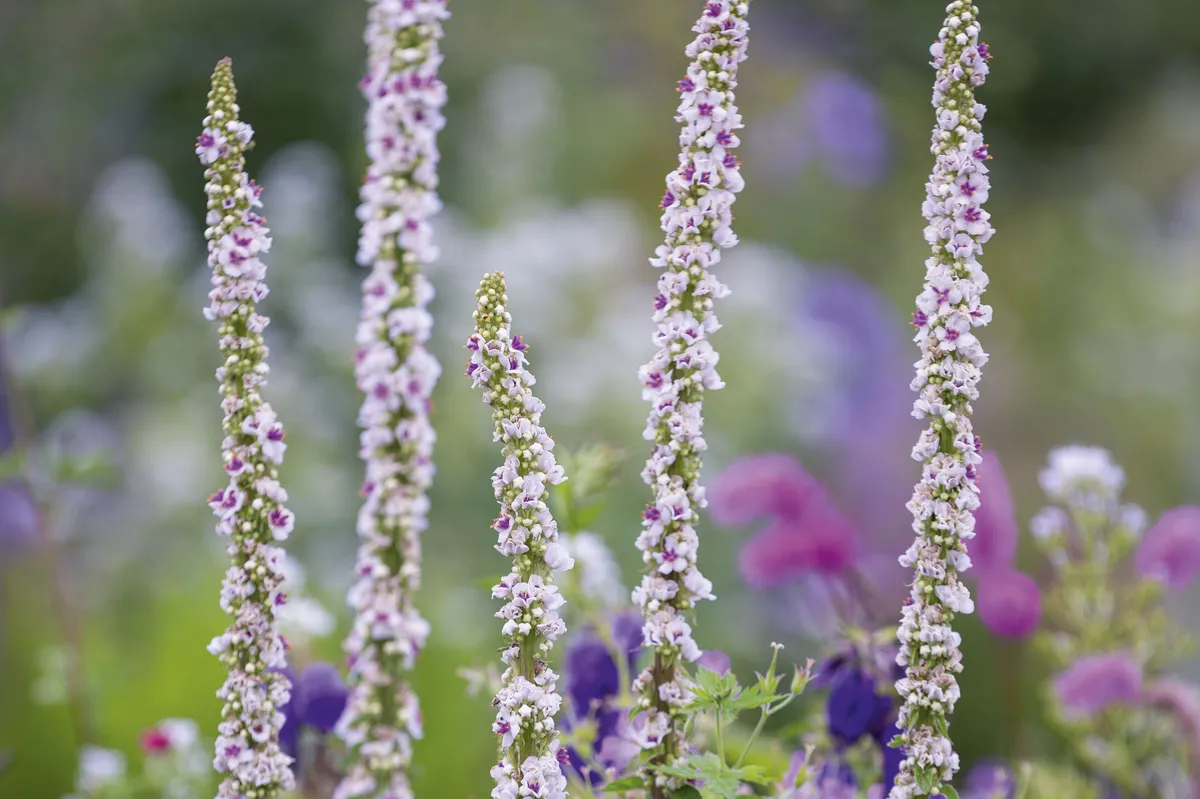
An extremely easy-going plant with white flowers and rose-red centres that is much loved by pollinators and beneficial insects. Need full sun and prefers free-draining soil. 90cm. RHS H6, USDA 5a-8b†. Here's our plant profile on verbascum and how to grow it.
Knautia macedonica ‘Mars Midget’
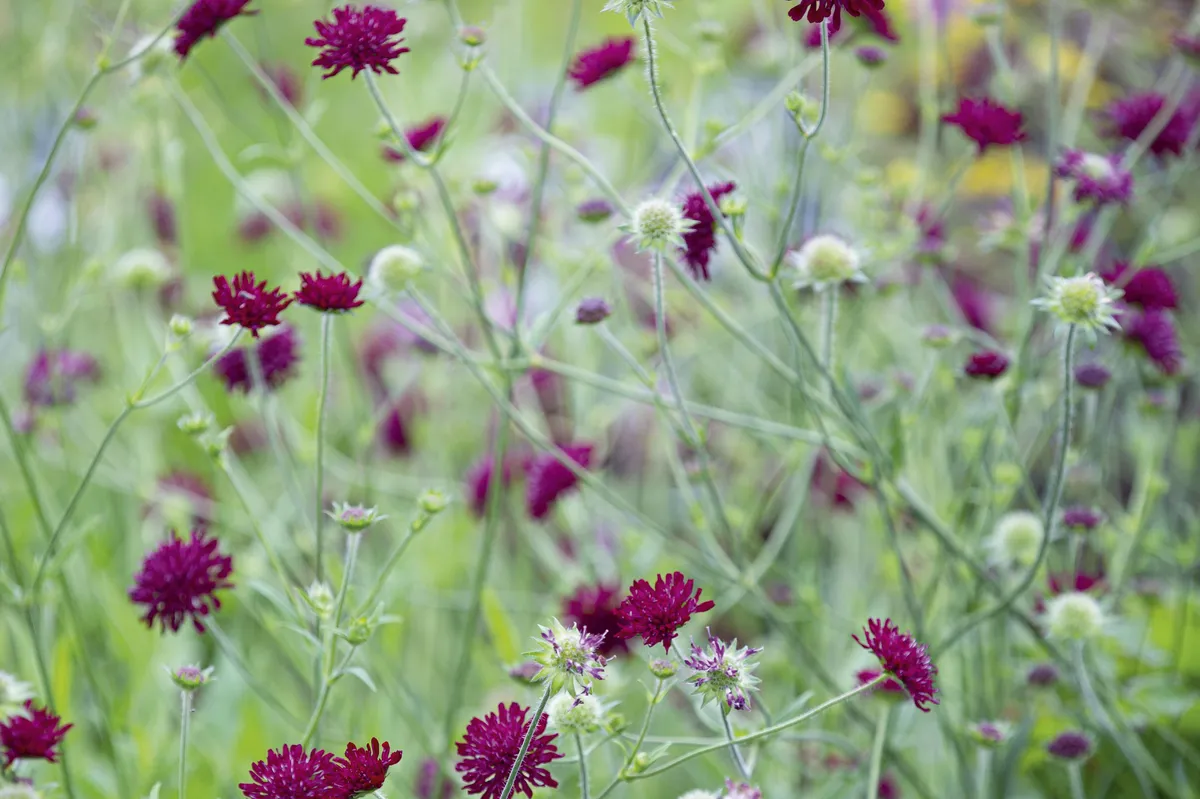
While this cultivar is very similar to the species, it has shorter flower stems. Loved by pollinators, it flowers throughout the summer. “We’d argue it’s our best plant for bees and butterflies,” say Richard and Jill. 45cm. RHS H7, USDA 5a-8b.
Nepeta nervosa ‘Pink Candy
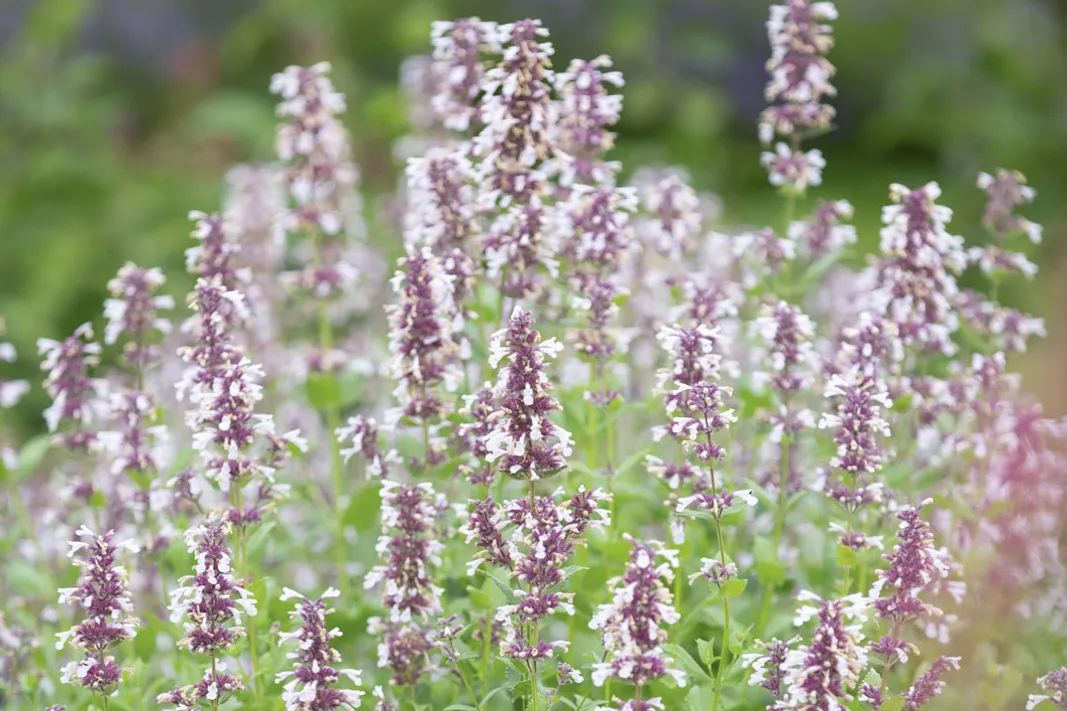
A catmint with upright spikes of lavender-pink flowers that appear from June to September above grey-green leaves. 60cm. RHS H7.
Penstemon ‘Pensham Plum Jerkum’
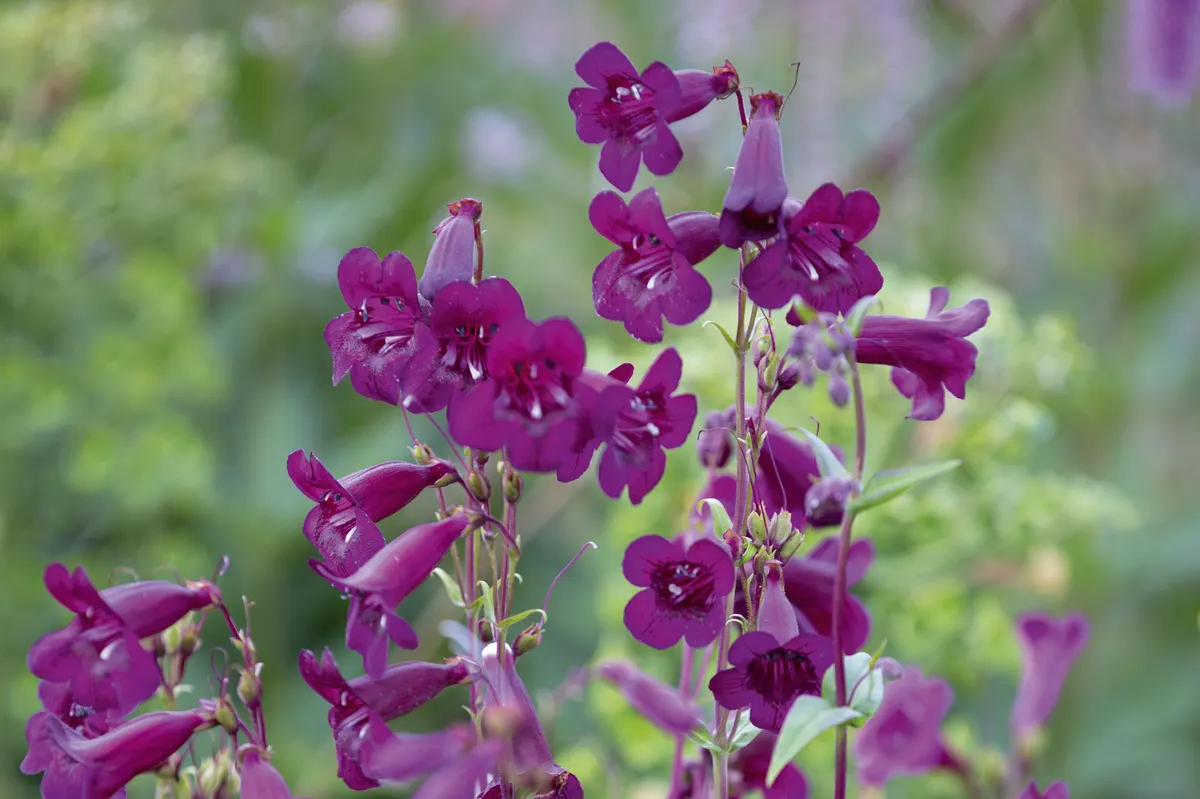
This cultivar has a lovely colour and is surprisingly hardy and trustworthy for a penstemon. Wait until the end of April or May to prune. 70cm. RHS H4.
Here's our focus on penstemon and how to grow it.
Pychnis chalcedonica ‘Rosea’
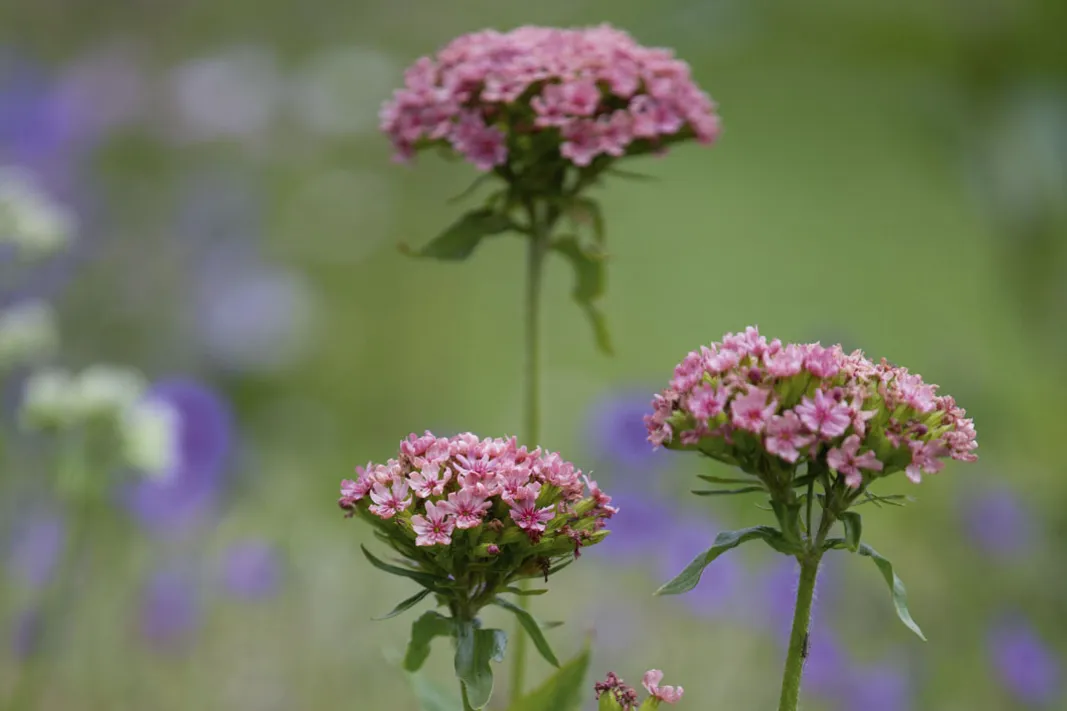
A beautiful and unusual-looking campion with delicate, rose-pink flowers on tall stems. Flowers bloom all summer long. 1m.
Cephalaria gigantea
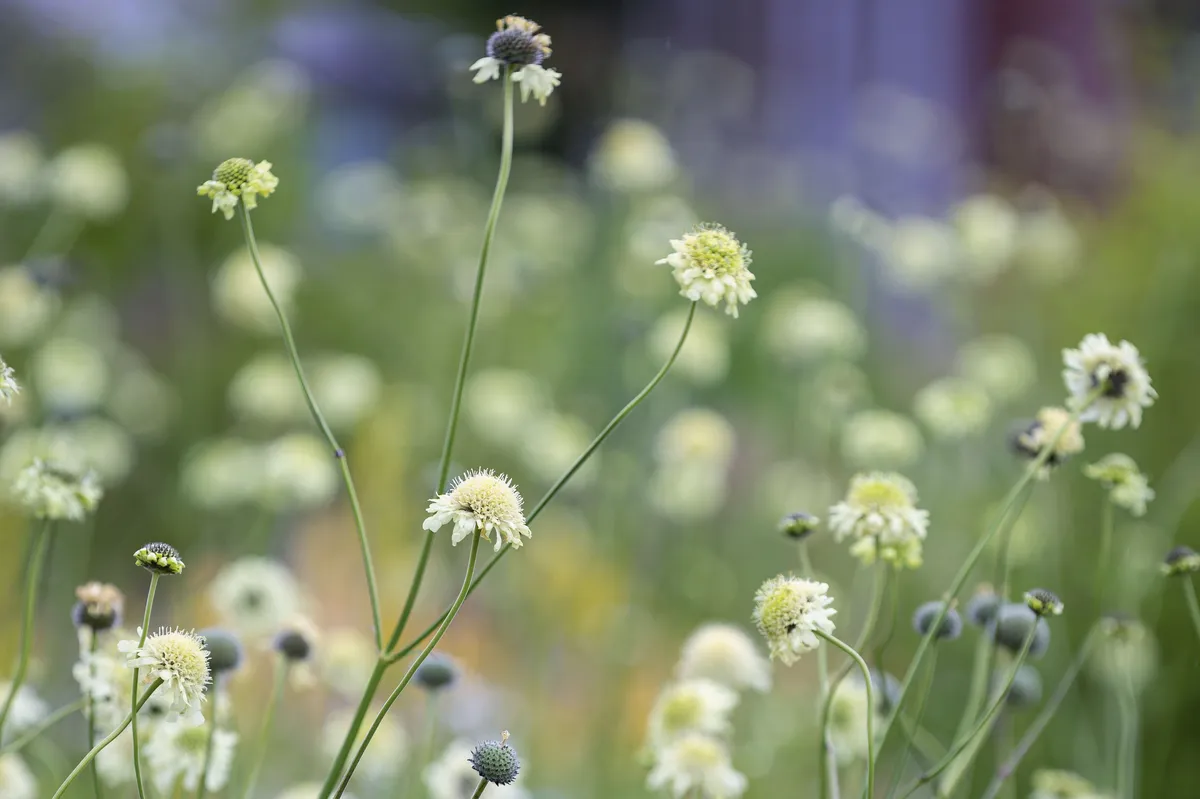
This tall, airy scabious adds a nice movement to the garden and will lift a corner that needs a little something. Works well against the red brick of the walled garden. 2m. RHS H7, USDA 3a-7b.
Penstemon ‘Dark Towers’
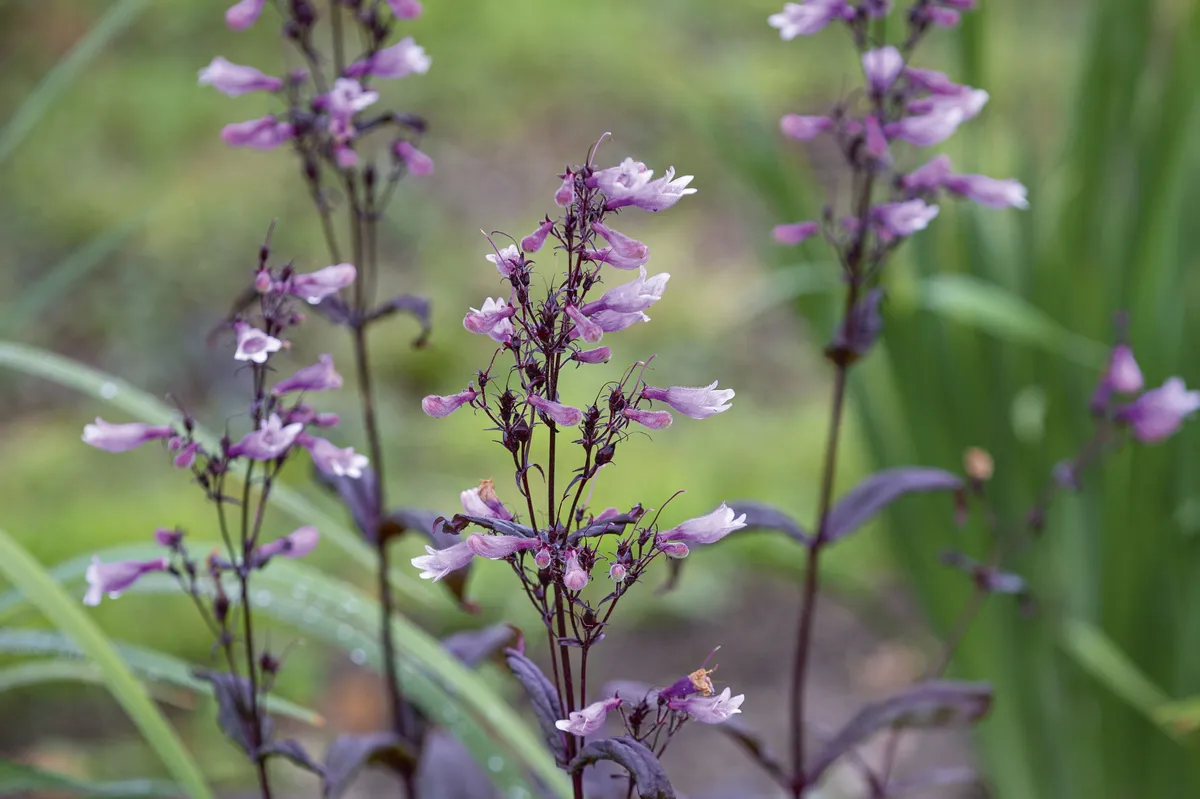
A penstemon that offers deep bronze-red foliage with contrasting deep-pink flowers that appear from June to September. 90cm. RHS H4, USDA 3a-8b.
Here's our focus on penstemon and how to grow it.
Eryngium giganteum
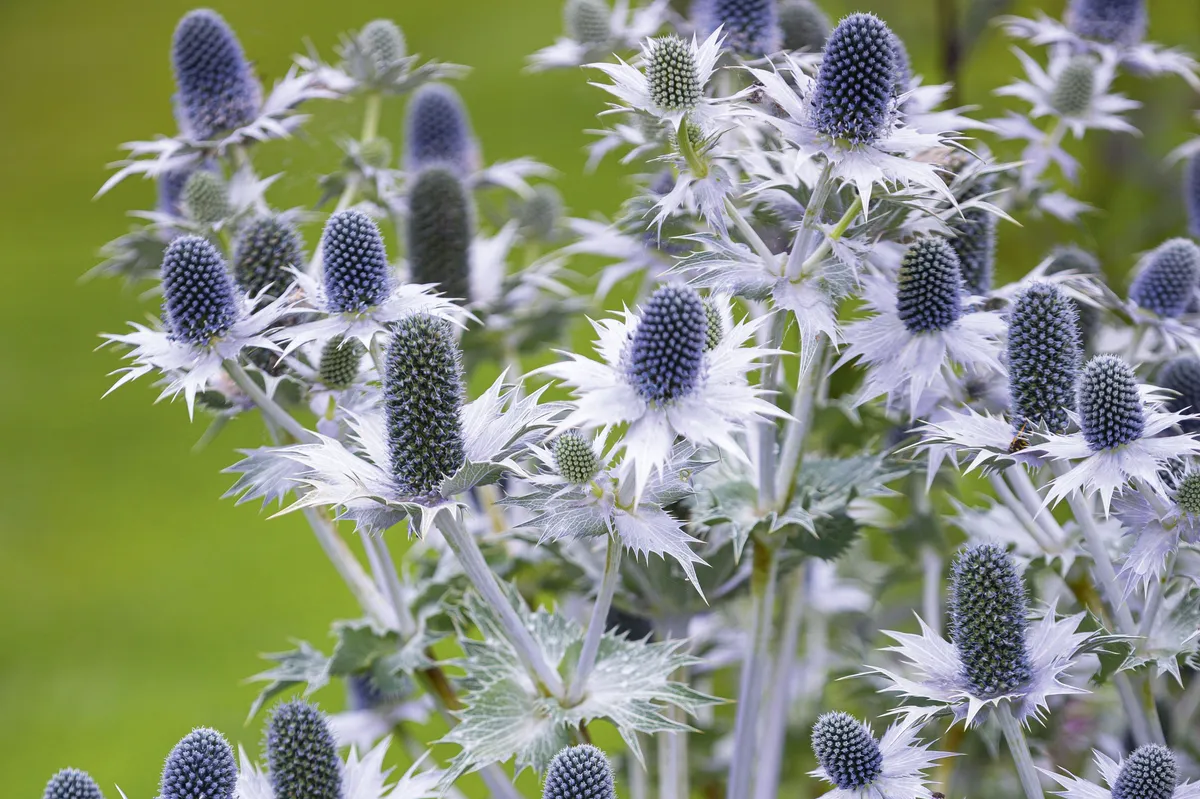
Known as Miss Willmott’s ghost, after the gardener’s habit of secretly scattering its seeds from her pocket, this sea holly is a favourite for good reason. It may appear where it wants and prolifically so, but it never looks out of place. 1.2m. AGM*. RHS H6, USDA 4a-7b.
Don't miss our plant profile on eryngium
Lysimachia ciliata ‘Firecracker’
From midsummer until September this lovely loosestrife offers nodding, star-shaped, lemon-yellow flowers above attractively contrasting, lance-shaped leaves that, if grown in a sunny spot, have a deep-purple flush. 1m. AGM. RHS H6.
Achillea ‘Inca Gold’
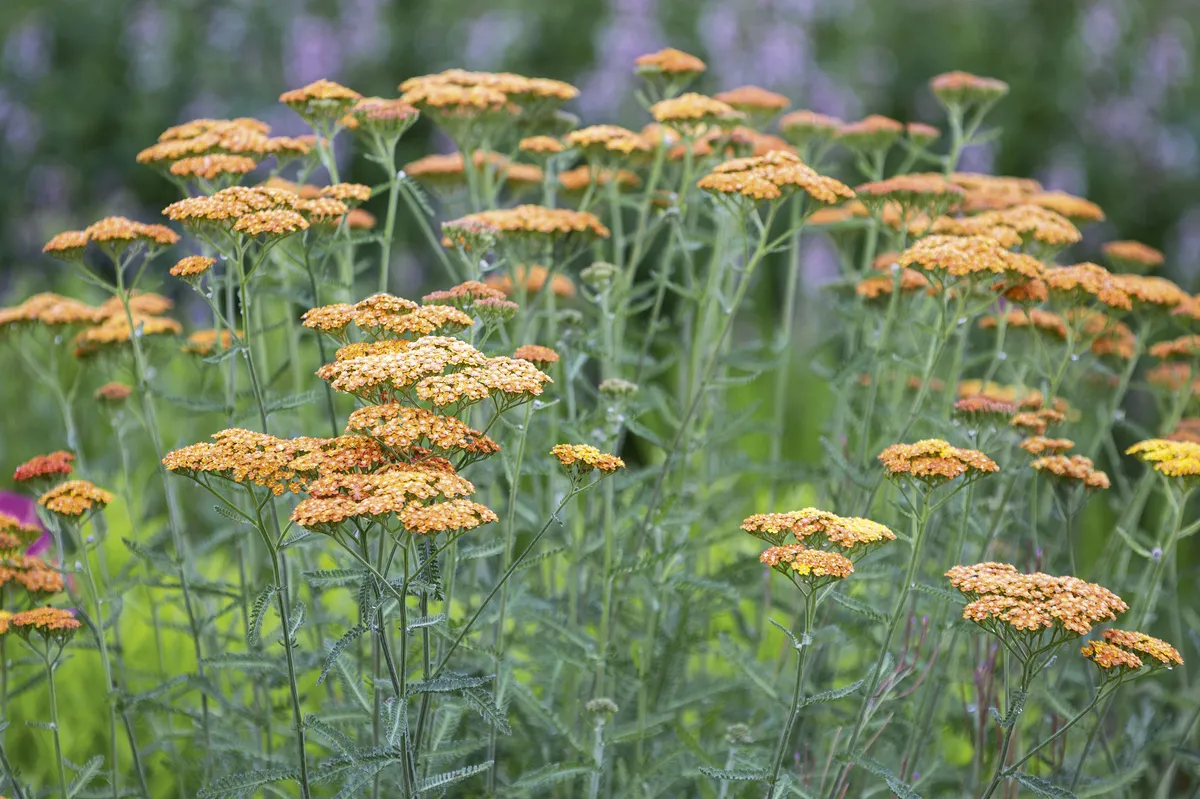
Flowers are an unusual shade of terracotta that fades and changes to yellow across the season. Loves full sun and dislikes being overcrowded or shaded out. 75cm. RHS H7.
Hemerocallis ‘Lemon Bells’

A vigorous daylily with scented, yellow flowers that are carried on slender stems above a mound of arching, slender, mid-green leaves. Happy in full sun or part shade. 90cm. RHS H6.
Veronica longifolia ‘Blue John’
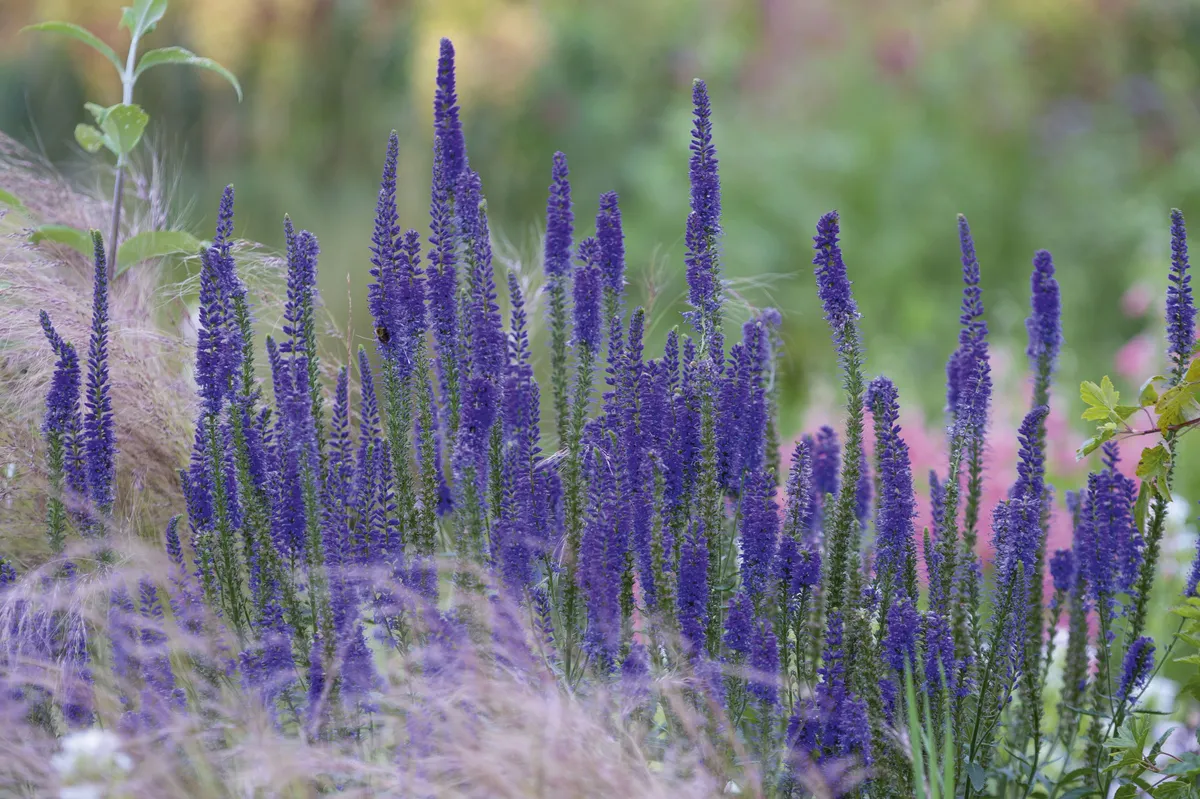
This clump-forming speedwell cultivar has deep-blue, nectar-rich flowers from June to November, making it an excellent plant for the bees. 1.2m. RHS H7, USDA 4a-8b.
Tanacetum vulgare ‘Golden Fleece’
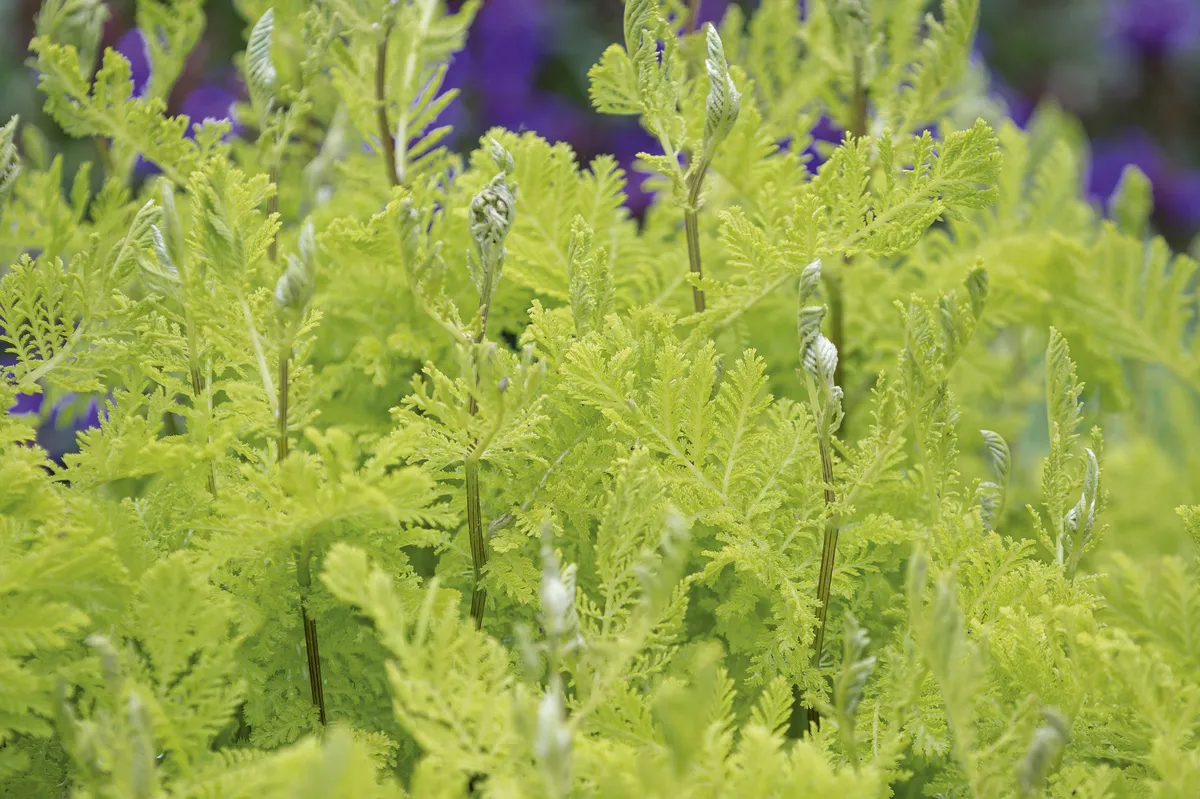
Although this tansy cultivar offers small, yellow flowers that are much loved by pollinators, its real draw is the vibrant, golden-green foliage, which contrasts well with maroon or purple plants. 50cm. RHS H7.
Echinops ritro
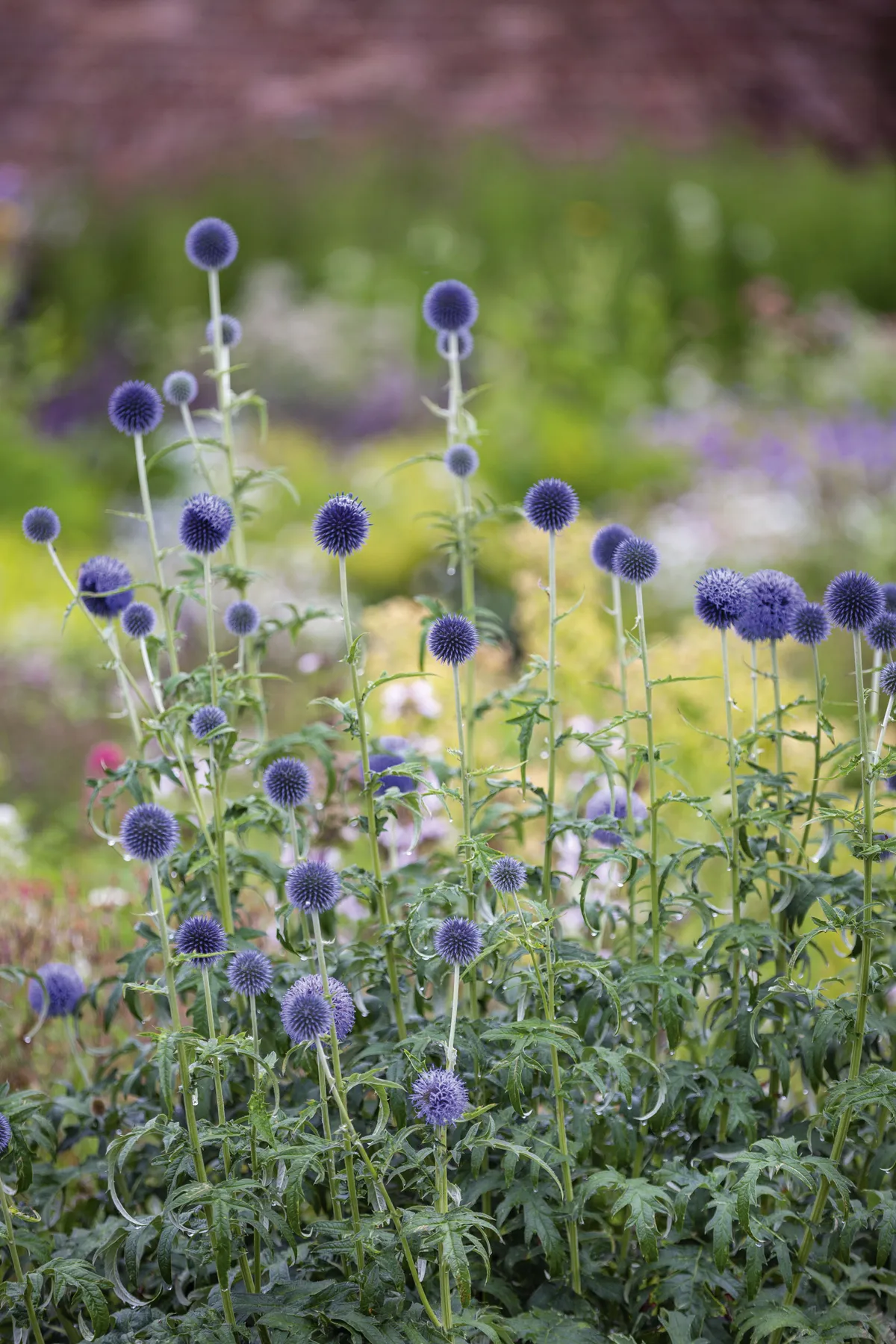
Given a suitably sunny spot, this vigorous globe thistle can cope with even the poorest soil. Its handsome, steel-blue heads are held on tall stems above prickly, silvery foliage. 1.2m. RHS H7, USDA 3a-8b.
*Holds an Award of Garden Merit from the Royal Horticultural Society. †Hardiness ratings given where available
